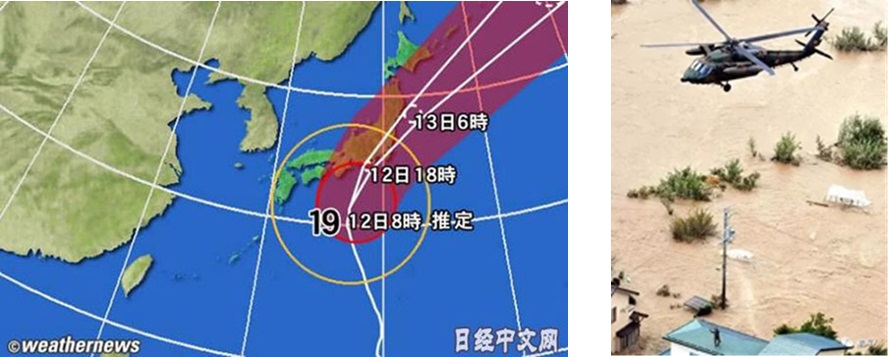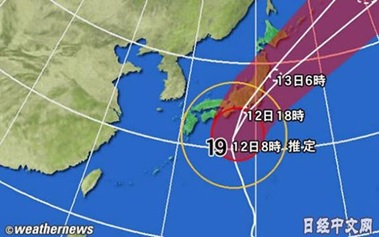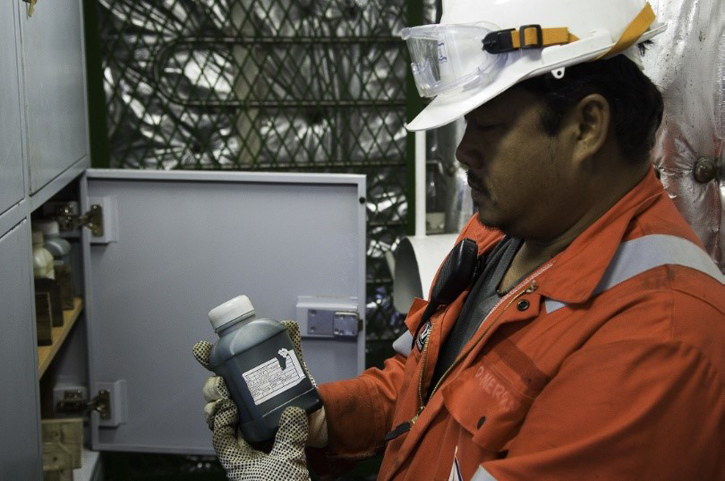On 12 Oct 2019, No. 19 typhoon ‘Hagibis’ landed on the Izu Peninsula of Shizuoka Prefecture, Japan and continued to move over the Kanto region, sweeping more than half of the Japanese archipelagos.
Bad news
According to reports, there are 24 bursts out of the 21 rivers around Qianquchuan in Nagano. There are also large-scale flood disasters occurring in various places with geological disasters appearing one after another. Based on Kyodo News report on 14th Oct (Noon), 36 people were killed in 11 Prefectures in the Kanto and Northeast regions with 17 persons missing, and many injured. Many areas remains in an isolated situation at a moment.
A Panama flag cargo ship which was sheltering from this typhoon inside Tokyo Bay on 10th Oct 2019 sank on the 12th Oct 2019 nightfall. The Japanese media quoted the news of the maritime security headquarters of the third district reported that 5 peoples were killed, 4 rescued, and 3 more remains missing. Currently, the search and rescue mission is still under progress.

Good News
One of our managed ship which is bound for cargo discharge at Chiba, Japan (ETB 10th, ETD 12th), the Ship’s master in consideration of the current good cooperation with charterers, had made initial plans to discharge cargo as per schedule and will remain port stay inside of Tokyo Bay in bid of sheltering away from Typhoon HAGIBIS just as most vessels had adopted this safety measure to avoid the direct impact of the typhoon. Nonetheless, our office management team conducted an emergency meeting in analysis and risk assessment of Typhoon Hagibis. In consideration of the ship and crew’s safety, it was instructed that the captain is required to report to the Charterers, weather routine and all relevant parties that the ship will proceed into the open sea (ese of Tokyo Bay and kept a safety distance of 300 nautical miles from the center of the typhoon instead of remaining within Tokyo Bay.
The reasons are :-
- The Hagibis is a super Typhoon which we never meet before, it is anticipated that it will cause wind above BF14 (Actual wind speed over 58m/s = BF 17) and wave of over 12meters. Henceforth, it is very dangerous for ship
- High vessels density inside of Tokyo bay and as such in case of dropping an anchor, the exposure to collision risk is very high
Thus, with ship owners’ permission, and no objection from Charterers, the said ship was given the following instructions :
- To proceed to an open sea (ESE) and reach a safe location from the Hagibis’approach.
- Keep engine on standby and adjust the position accordingly.
Finally, our ships successfully sheltered from this super Typhoon with all Ship/crew/cargo reported as safe.

Evaluation
It was unfortunate that such a disaster had occurred to Japan and the sinking of the panama flag ship, we certainly hoped that the missing persons can be found soon.
Our managed ship managed to sheltered from this super Typhoon successfully was due to
1.) The Management company has able to maintain a close observation on the ships’ movement and weather condition closely with ship monitoring system present in office, hence we are able to provide timely guidance/advice.
2.) In this case, as Hagibis is a super typhoon, office management team was quick to realize that the master’s initial sheltering plan is not sufficient and decided hold an emergency meeting to analysis the immediate situation and carry out risk assessment. Therefore, it is decided that the best and safest sheltering plan is proceed to open sea (ESE of Tokyo bay). In this way, we can ensure that there is sufficient space for ship to keep away from the super typhoon.
Lessons learned
1.) The masters must understand that safety of vessel/crew/cargo which should be prioritized over Charterers’ economy.
2.) Never to simply make decision with limited information (never just rely on others do same way), they should always double check with office before making the final decision as the shore office has sufficient resources to provide the correct and full support to ensure ship and crew safety.







